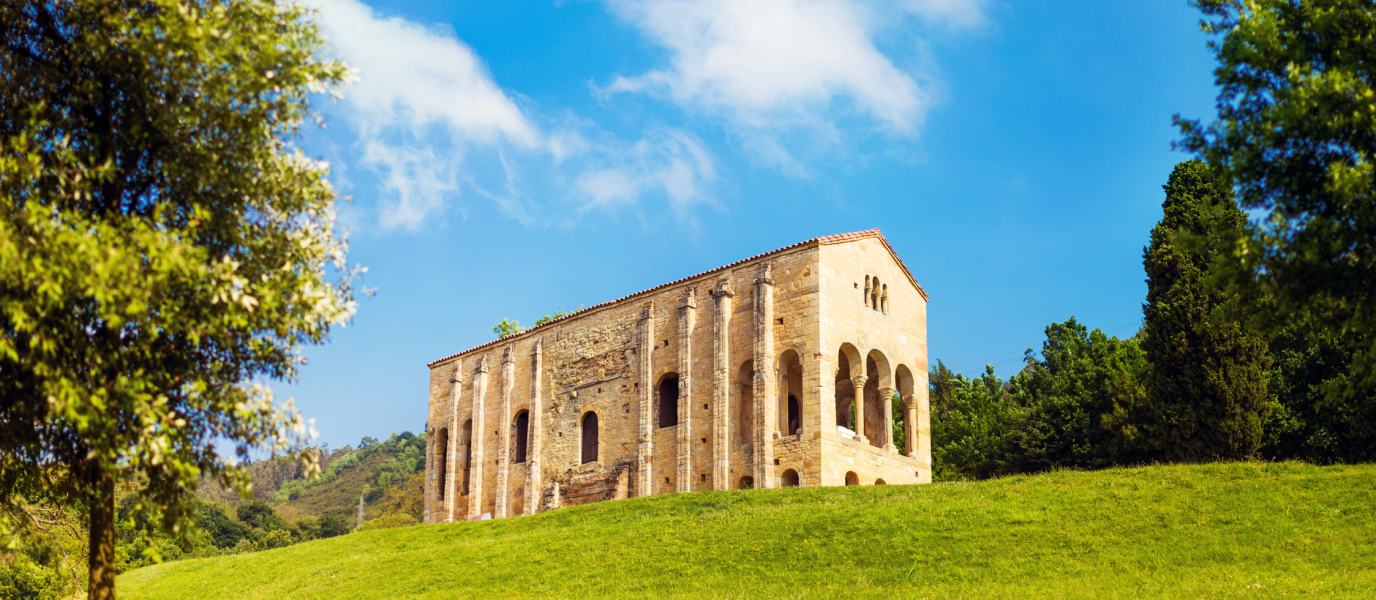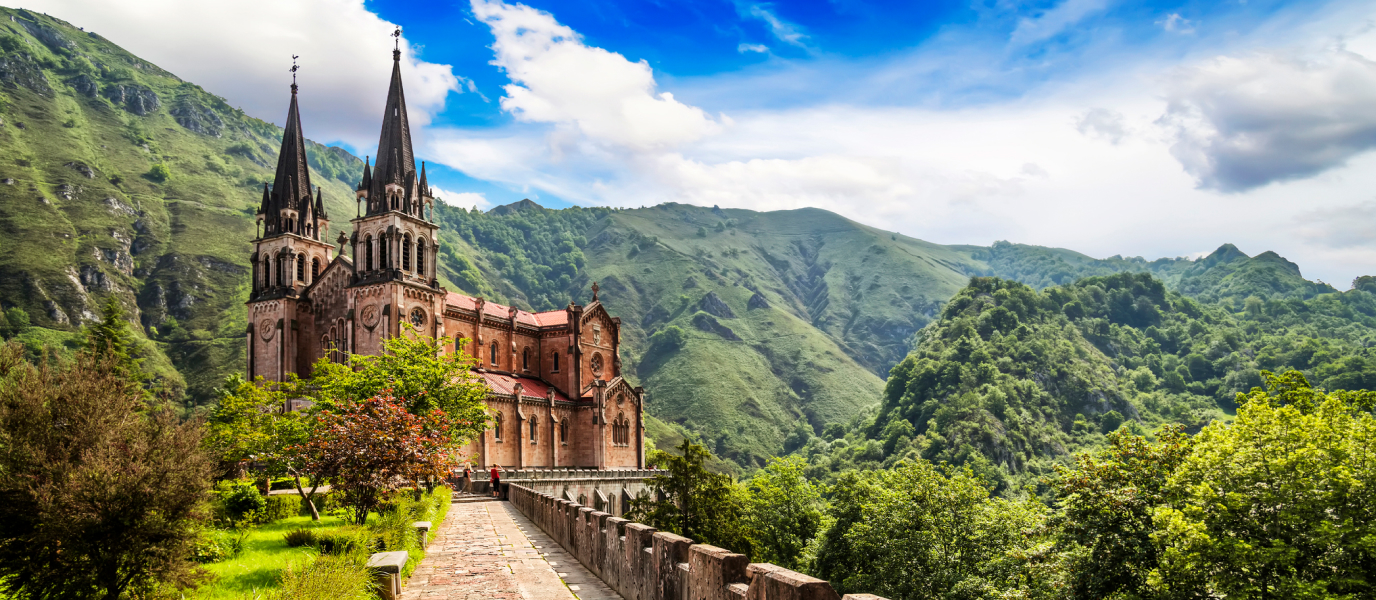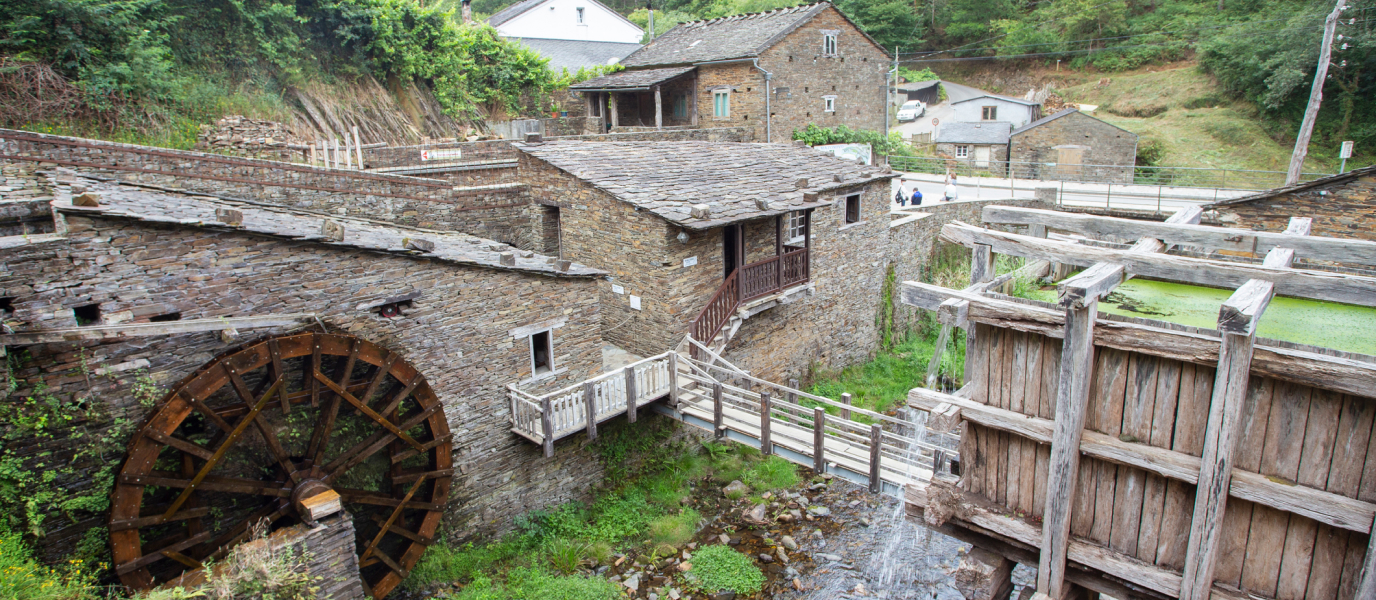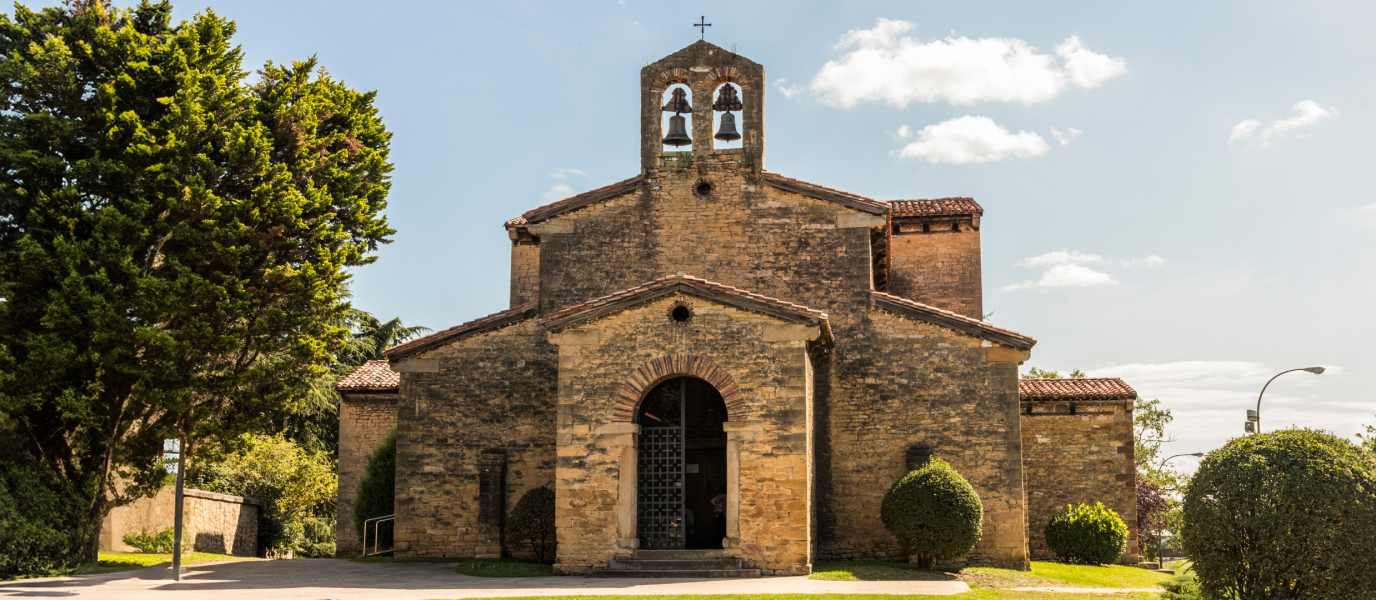The Church of Santa María del Naranco was declared a National Monument and World Heritage Site by UNESCO in 1985. When you enter, you really get a feel for what makes this austere building so magnificent. The church is an extremely well-preserved example of Spanish pre-Romanesque architecture.
Santa María del Naranco: a must-see
The building dates back to the year 842. Sources suggest that it was not initially intended as a church, but rather as the aula regia (Latin for ‘royal hall’) of the palace of King Ramiro I. The monarch ordered that the building be erected in the outer regions of the Kingdom of Asturias. Santa María del Naranco was eventually raised at the foot of the hill bearing the same name, just 4 km from the beautiful capital of Oviedo. It was built in the Ramirense style (named after the monarch) – a variant of Asturian pre-Romanesque architecture.
Santa María del Naranco was deliberately sited close to the Church of San Miguel de Lillo.
About Santa María del Naranco
The church has a gable roof and a stone plinth that raises it above ground level. It measures 20 m x 6 m x 11 m, making it distinctively narrow and tall.
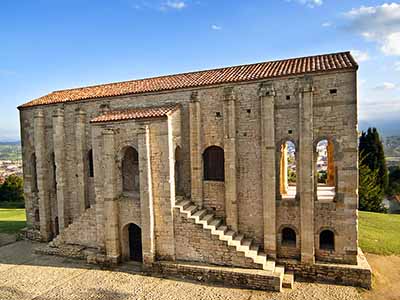
Lines of different coloured stone separate the church into three zones when viewed from the outside – one for the lower level and two for the upper level:
- The lower level houses the crypt – an enclosed yet airy and unobstructed space. Many claim that the barrel-vaulted structure resembles the Cámara Santa in Oviedo Cathedral. The king may have used this hall to receive his subjects. Access is through an arched door and the rows of balconies on the upper floor create two chambers at either end.
- An external staircase provides access to the upper floor, comprising a single room with three open arches at either end providing views to the outside. It is completely symmetrical and divided into three sections.
The six arches in the central hall create a sense of depth and the entire church boasts skilful masonry. The result is a slimline and solid building with striking symmetry, and intriguing architecture that includes an attractive barrel vault.

Sculptural adornments
The church is a fine example of Asturian pre-Romanesque architecture. The aesthetic both inside and out – somewhat unrefined and with Roman influences – results in an immensely beautiful yet austere building.
The columns, capitals and arch medallions inside the church are decorated with animal motifs. Study the medallions and you’ll find birds, horses and warriors.
The medallions and pilasters are also adorned with depictions of monastic figures and horseback riders which are highly representative of the period.
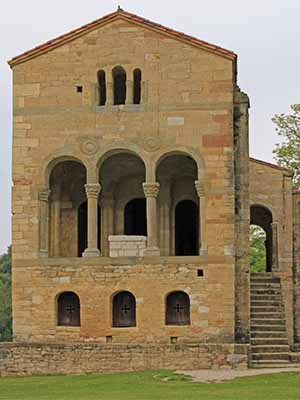
Monuments close to Santa María del Naranco
When visiting, make sure to take in the Church of San Miguel de Lillo which sits just 300 m from Santa María del Naranco. It’s another example of pre-Romanesque architecture and was also built by order of Ramiro I, who likely envisaged it as his palace church.
San Miguel de Lillo was declared a World Heritage Site by UNESCO in 1985 together with Santa María del Naranco. Part of the building collapsed in 2009 causing significant damage inside, though restoration began in 2011 and the church has since been returned to its former glory.
Oviedo is just 4 km from these two beautiful churches and is definitely worth a visit. The cathedral, archaeology museum and university are just some of the highlights of a city that boasts a thriving culture, gastronomy scene and nightlife.




































































